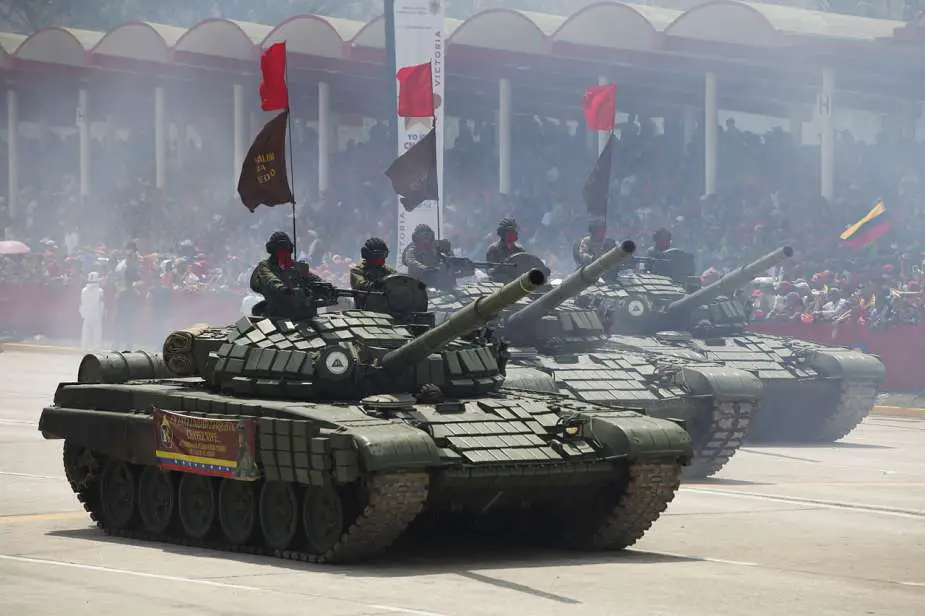Breaking news
Venezuela Prepares for Military Operations Against Guyana Over Essequibo Dispute.
Caracas, Venezuela, November 30, 2023 – In a significant escalation of tensions in the Latin America region, the Venezuelan government has announced plans for impending military operations against the Republic of Guyana. Sources close to the government reveal that detailed preparations are underway, including the deployment of military personnel, in anticipation of a referendum scheduled for December 3, 2023.
Follow Army Recognition on Google News at this link

Venezuela's armed forces are considered one of the largest military forces in Latin America. (Picture source Wikimedia)
The referendum, which has been a subject of contention, is set to address the long-standing dispute between Venezuela and Guyana over the resource-rich Essequibo territory. This announcement marks a dramatic shift in Venezuela's approach to the territorial disagreement, which has historically been managed through diplomatic channels. The international community is closely monitoring the situation, amid concerns about the potential for conflict in an already volatile region.
General Domingo Hernández Lárez, commander of strategic operations of Venezuela's Bolivarian Armed Forces, said on November 29, 2023, that 356,513 soldiers will be deployed for security during the referendum, according to statements published in local media.
Also, the minister of the interior, justice and peace, Remigio Ceballos, said more than 120,000 police officers will be deployed, in statements broadcast by Venezolana de Televisión, the state channel.
The referendum, in which Venezuelan voters will be asked five questions concerning the dispute, will give the government a path to decisions in view of the intervention of the International Court of Justice in the resolution of the territorial dispute over more than 159,000 square kilometers (61,000 square miles) claimed by Venezuela for more than a century.
When comparing the military power of the Republic of Guyana with that of Venezuela, there is a significant disparity in both size and technological capabilities. Venezuela possesses one of the largest armed forces in Latin America, equipped with a broad array of advanced military hardware including fighter jets, modern naval vessels, and a variety of armored vehicles. This contrasts sharply with Guyana's Defence Force, which is considerably smaller and more limited in its capabilities.
Guyana's military primarily comprises light infantry, supported by small naval patrol crafts and a few light transport and reconnaissance aircraft. The disparity is not just in terms of hardware; Venezuela's military also significantly outnumbers Guyana's in terms of active personnel and reservists. This difference in military strength is reflective of the varying geopolitical priorities and economic capacities of the two nations.
The Army of Guyana has a total of around 3,000 soldiers equipped with a few combat vehicles including 12 FV101 Scorpion Light Tank, 1 FV105 Sultan (Command Post), 3 FV107 Scimitar light reconnaissance armored vehicles and 40 FV601 Saladin and 13 RBY-1 light 4x4 reconnaissance vehicle.
The total number of active military personnel in Venezuela is generally estimated to be 123,000 military personnel (Army 63,000 Navy 25,500 Air 11,500 National Guard 23,000) Gendarmerie & Paramilitary 220,000, making it one of the larger military forces in Latin America. This number includes personnel across all branches: the Army, Navy, Air Force, and the National Guard.
The Venezuela army is equipped with 173 Main Battle Tanks (MBTs) including 81 AMX-30V, 92 T-72B1 and 109 light tanks consisting of 31 AMX-13 and 78 Scorpion-90 as well as 121 reconnaissance vehicles with 42 Dragoon 300 LFV2, 79 V-100/V-150, 237 IFVs (Infantry Fighting Vehicles) 123 BMP-3, 114 BTR-80A and 45 APCs (Armored Personnel Carriers) including 25 AMX-VCI, 12 AMX-PC and 8 AMX ambulance and 36 Dragoon 300 wheeled armored vehicles.
The terrain along the border between Venezuela and Guyana is one of dense tropical rainforests, rugged mountains, and winding rivers, forming part of the ancient and ecologically rich Guiana Shield. This landscape, predominantly covered by vast extensions of the Amazon rainforest, presents a challenging environment with dense vegetation and limited visibility, complicating navigation and reconnaissance efforts. Additionally, the presence of the Guiana Highlands, including the Pakaraima mountain range, introduces rugged and uneven terrain, posing significant challenges to any ground movement or military operations.
In the event of a combat scenario between Venezuela and Guyana, this terrain would play a critical role in shaping military strategies. The dense forests and mountainous areas would likely hinder large-scale troop movements and the use of heavy combat vehicles as MBTs (Main Battle Tanks), possibly leading to a reliance on light infantry and specialized jungle warfare tactics. The numerous rivers, including the significant Essequibo River which has been a point of territorial dispute, would become strategic locations, serving as potential barriers or conduits for movement.
Furthermore, the remoteness and inaccessibility of much of this border region could pose logistical challenges, impacting supply lines and communication. For aerial operations, the thick canopy and unpredictable weather patterns associated with tropical rainforests could limit the effectiveness of air support. In such a terrain, smaller, more agile units with expertise in jungle warfare and riverine operations might have a tactical advantage. Overall, any military engagement in this area would likely be heavily influenced by the challenging environmental conditions and the need for specialized training and equipment to navigate them effectively.
Defense News November 2023























